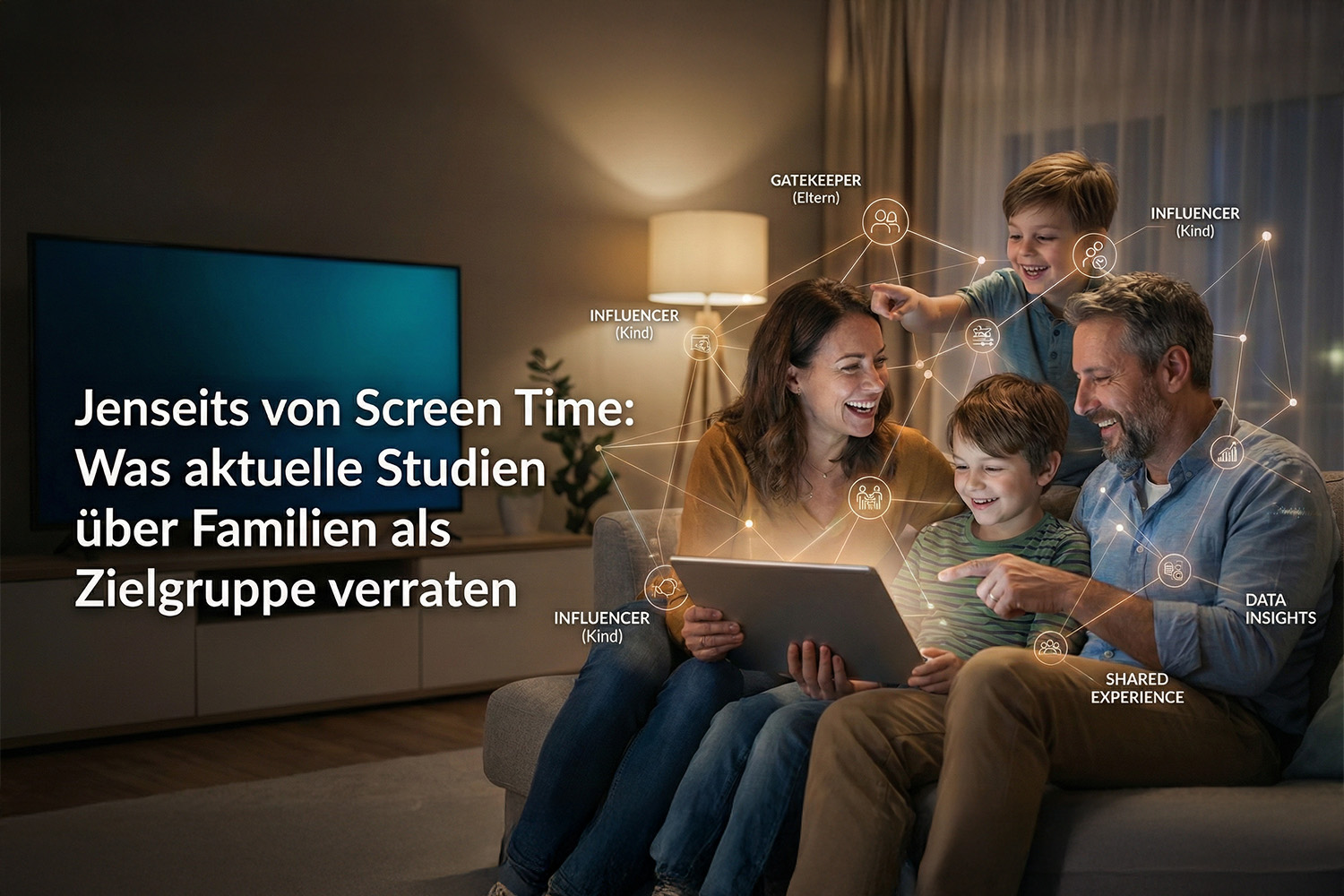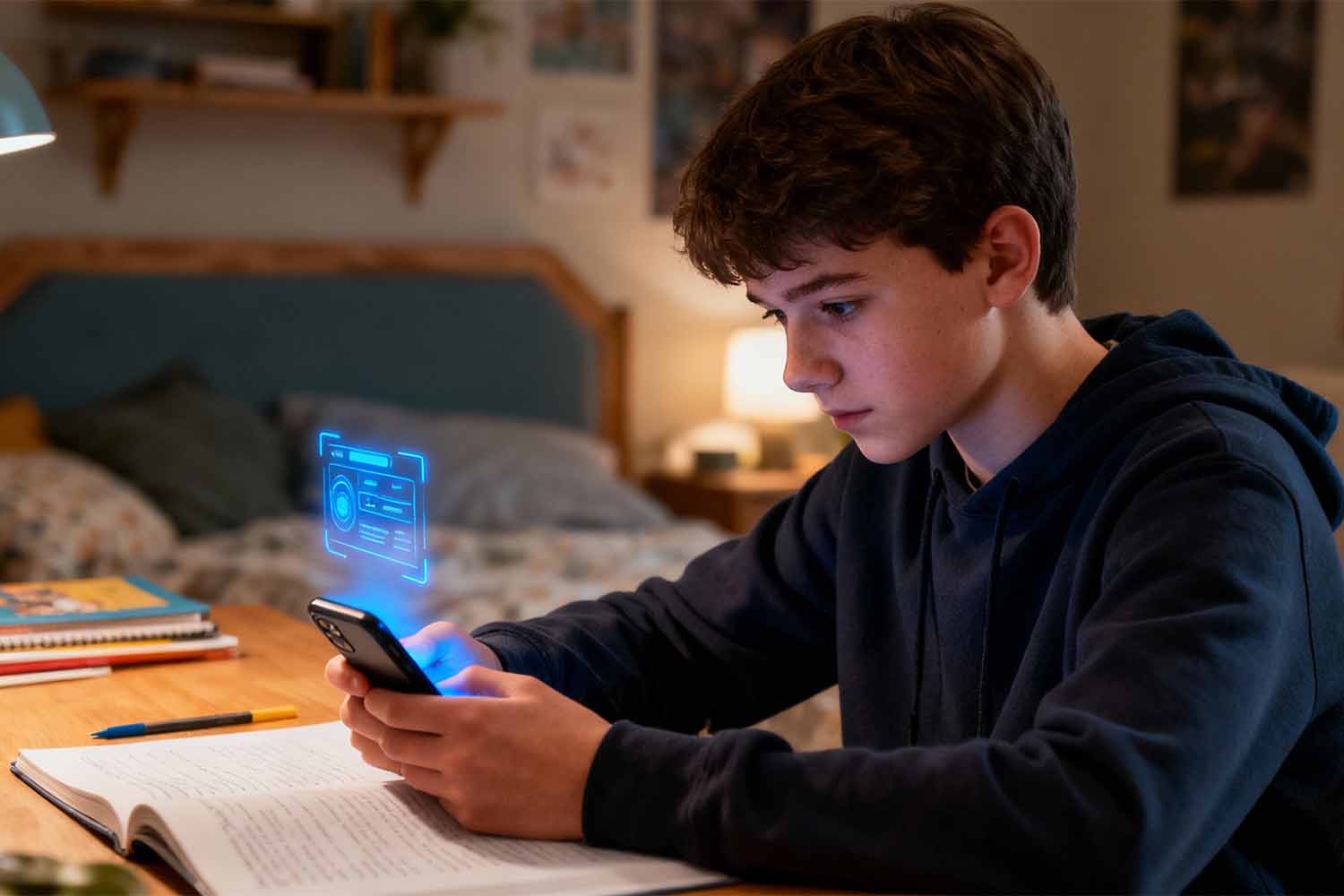1. Introduction: Why marketing for children and families is now more digital than ever
Since 1999, the KIM study (Childhood, Internet, Media) has been a standard work for understanding the media behavior of 6 to 13-year-olds in Germany. In autumn 2024, around 1,200 children and their educators were surveyed to reflect current trends in equipment, usage habits and digital activities. For marketing and communication managers in family ecosystems, this data is invaluable: It not only shows Where and how children travel today, but also provide starting points like family brands (from books to streaming services) Be able to build relevance.
2. Media equipment in the children's room: Everything there — only what are they really accessing?
- Penetration in households
- 100% of the households surveyed have a television, 99% have Internet access, 98% have a smartphone.
- Streaming subscriptions (such as Netflix) have risen from 58% to 70% in the last two years. Smart TVs grew from 61% to 69%, tablets from 55% to 60%.
- Child ownership: Smartphone tops the list
- 46% of all 6 to 13-year-olds own their own smartphone (6-7 years: 11%; 12-13 years: 79%).
- This is followed by portable game consoles (26%), TVs in children's rooms (30%, including 14% smart TVs), tablets (14%) and classic elements such as CD players at just 4%.
- Takeaway for marketing professionals
- Even the youngest are growing up in a digitalized media world. Every campaign that is designed for children and families must take digital touchpoints (smartphone, tablet, TV) into account in order to actually be noticed.
3. Everyday smartphone life: From couch to bed and into the break
- Companions in all situations
- 96% of children with smartphones take their mobile phones with them when they meet friends.
- 82% take it to school, 65% to a sports club or youth group.
- 58% also have their smartphones with them in their own bed — a clear sign of evening or night activities.
- Age trend: The older, the more present
- While only 11% of 6 to 7 year olds own their own smartphone, the figure for 12 to 13 year olds is already 79%. Accordingly, everyday presence is steadily increasing.
- What does that mean for family marketing?
- Brand messages must start at times when the smartphone is really “wide awake”: breaks, commuting home, evenings. Push messages, snack content, and micro-learning elements (such as short audio nuggets for before bed) hit the mark.
4. Internet use: Online every day — leisure time is becoming more digital
- Intensity increases
- 72% of all 6 to 13-year-olds are online at least rarely (boys: 74%; girls: 70%).
- Among children who use the Internet (n = 879), 54% are online daily (2022:47%), 33% weekly and only 13% less frequently.
- Daily Internet usage rose particularly significantly among 8-9 year olds (+17 PP) and 10-11 year olds (+14 PP).
- Top online activities
- whatsapp is in first place: 73% of Internet users communicate with it at least weekly (2022:67%).
- TikTok This is followed by 42% weekly usage (2022:37%). Instagram (25%) and Snapchat (21%) are relatively stable, Facebook continues to lose relevance (17%).
- videos/streaming: 47% watch clips, series or films daily or almost daily (2022:39%).
- Guiding principles for campaign strategy
- Age-appropriate content formats (short videos, interactive stories) work from 8 years of age at the latest. Anyone who wants to establish brand-defining relationships with families relies on chat bots or chat-based newsletters (e.g. “parent check-in via WhatsApp”) and video clips that are designed precisely for short attention spans.
5. Video consumption: Linear TV may remain stable, streaming is unstoppable
- Linear television remains relevant
- 92% of children watch linear TV at least once a week, 67% daily.
- Streaming is rapidly establishing itself
- 56% of children use Netflix weekly (2022:47%). KiKA follows with 54% (2022:48%), YouTube with 52% (2022:46%).
- Netflix ousted KiKA as the favorite platform in the top 3 rankings for the first time (2024:21% vs. KiKA: 14% vs. YouTube: 11%).
- Device insight
- 50% of YouTube is consumed on smartphones, 20% on TV and 20% on laptops. TikTok, Instagram and Snapchat run almost exclusively on smartphones.
- Practical impulse
- Content landscapes absolutely must integrate streaming platforms and social video channels. Short-term campaigns can now be placed just as easily via in-stream ads in Netflix children's menus as via classic TV commercials.
6. Social media & communication: talks, voice messages and digital meeting places
- “WhatsApp is the new schoolyard cache”
- 73% use WhatsApp at least once a week, even though the official minimum age is 13 years.
- 32% communicate daily with friends via chat messages, 25% send voice messages daily, 21% make calls daily. Video chat is 12% daily.
- Group economy
- On average, children are active in three WhatsApp groups (6—7 years: 1 group; 12—13 years: 3.9 groups).
- Class groups are also widespread, often without completeness (lack of smartphones, deliberate exit, “being unpopular”).
- The key to dialogue-oriented marketing
- Brands can install messenger groups (such as “Reading Challenge” via WhatsApp) or short audio series via voice message to encourage direct interactions with children and parents. This creates proximity and “word of mouth” on equal footing with the target group.
7. Audio formats: Between audiobook nostalgia and podcast curiosity
- Radio plays and audio books firmly anchored
- 54% of children listen at least occasionally to audiobooks/audio plays (e.g. “Die drei??? “, “TKKG”, “Bibi and Tina”); 31% at least weekly.
- Podcasts on the rise, but still have potential
- 22% listen to podcasts at least rarely (2022:24%), just under 47% never use them. Despite lower distribution, many children access audio: 20% listen to a radio play or podcast before going to sleep.
- Radio remains an everyday companion
- 25% listen to radio/music when getting up in the morning, 33% at breakfast. Audio formats also accompany you during homework (17%) and relaxation in the evening (20%).
- Marketing opportunity: auditory touchpoints
- Audio content works because it structures the daily routine: commuting, homework, bedtime rituals. Family brands can make people sit up and take notice with mini podcasts (“story time,” “knowledge nugget of the day”) or coordinated playlists in audiobook apps.
8. Digital media and school: learning between whiteboard and smartphone
- Smartphones are allowed in, but often only during breaks
- 77% of school-age children with smartphones are allowed to bring it with them (primary school 6—9 years: 60%; secondary school aged 10 years and over: 80—84%).
- Use: 63% only during breaks, 13% when needed in class, 3% at any time, 22% not at all.
- Digitalization in the classroom is picking up steam
- 31% use whiteboard/smartboard weekly, tablets 25%, laptops/notebooks 22% Tablet use is 40% among 12—13 year olds, and 35% of laptops.
- Learning programs, school clouds and word processing tools have arrived in class (around 30% per week). With 11% (“chatbots, text recognition”), AI tools have played a subordinate role so far.
- Benefits for family marketing
- Educational partnerships (digital tools, learning apps) score equally well with parents and schools. Brands that provide learning content or sports coaching modules for teaching create sustainable reach.
9. Gaming & child protection: Between “Minecraft” & age ratings
- Digital gaming is omnipresent
- 64% of children play digital games at least weekly (2022:59%); 28% daily.
- “Minecraft” remains the leader (24%), followed by “Fortnite” (13%) and “FIFA” (12%).
- Device preference by gender
- Girls play more frequently on smartphones (85%) and tablets (59%), boys more often on consoles (87%) and PC/laptop (76%).
- Age effect: Among 12—13 year olds, 80% are regular gamers; among 6—7 year olds, the figure is only 45%.
- Age Rating (USK): Awareness vs. Reality
- 70% of children have taken up USK labels (6—7 years: 40%; 12—13 years: 81%). 50% of those who are aware have already played tracks that are “actually too high” approved.
- Boys are more likely to ignore age limits (56% vs. girls 42%).
- Relevant for marketers
- Every gaming project must take youth protection standards into account, but also offer incentives that really inspire children. Only those who work with child-friendly tutorials and genre entry offers can reach the gaming target group and strengthen parental marketing.
10. Long-term trend Reading: Consolidation instead of erosion
- Reading books is constant
- 48% of 6 to 13-year-olds read a book at least once a week (1999:55%; 2020:55%). Since 2006, the figure has fluctuated around 50%.
- Daily readers are down slightly at 10% (—4 PP since 2022). Popular series: “Harry Potter,” “Diary of Greg,” “The Magic Tree House.”
- Audiobooks/audio plays firmly anchored
- 54% listen to radio plays/audiobooks at least occasionally, 31% weekly. Classics like “The Three??? “or “Bibi and Tina” will also dominate 2024.
- Cross-media potential
- Reading promotion combined with gaming or short video adaptations (e.g. animated book trailers) has been proven to be more motivating. The following applies here: Anyone who attracts attention in the digital world can strengthen analog reading rituals at the same time.
11. Takeaways for modern family communication
- Mobile-first — even for the youngest
Even 8-year-olds are online every day, and many take their smartphones with them to bed. Mobile campaigns with short snack content (max. 30 seconds) reach their target group exactly when there is attention. - Use cross-platforms and times of day
Audio formats (podcasts, audio plays) structure the day: morning routine, homework, bedtime ritual. Family brands can score points here with accompanying audio stories — as a hook for further product or service offerings. - Age segmentation brings relevance
Media usage and interests are shifting dramatically between 6 and 13 years. Marketing content must be specifically prepared for 6—7 year olds (especially linear TV, painting apps), 8—9 year olds (YouTube Kids, first messengers) and 10—13 year olds (social media, streaming, gaming). - Parents as gatekeepers and companions
55% of parents do not consistently control parental screen time — this is where media education recommendations and tools come in. Family agencies that pick up parents in terms of content and content technology create trust and multiplier effects. - School and learning as new touchpoints
When tablets, whiteboards, and learning apps move into the classroom, advertising and collaboration opportunities open up for educational initiatives. A (child-friendly) school performance program or tutor offers in app form can combine brand presentation and added value. - Take youth protection seriously, but inspire them at the same time
Over 50% have already played games for which they are “too young”. Only those who present youth protection labels in an understandable way and at the same time offer age-appropriate entry opportunities (e.g. online tutorials for USK beginners) will win parents and children.
12. Conclusion: Use insights to authentically pick up families
The KIM 2024 study shows that children are growing up today in a highly digitized media world in which linear TV, streaming, gaming, social media and audio formats are played in parallel. Effective family marketing Therefore, must
- multidigital his (smartphone, tablet, TV, audio),
- age-segmented (6—7 | 8—9 | 10—11 | 12—13),
- accompanying parents (media literacy, youth protection), and
- cross-media (Video ↔ Audio ↔ Print)
Only those who combine these facets and display content precisely can be permanently anchored in the minds of children, parents and educators. The key lies in the direct integration of data insights, target group segmentation and creative-educational know-how — this is how bridges are built between brands, families and the everyday lives of 6 to 13 year olds.
About the KIM study
The full study report of the 2024 KIM study by the Southwest Media Education Research Association can be found at www.mpfs.de. All figures and graphics are based on the survey from September to November 2024.
KIM keyword focus (SEO):
- KIM study 2024
- Media use children 6-13
- Streaming Kids Germany
- Children's everyday smartphone use
- Family marketing trends 2025
Written by child, parent and family marketing experts at KB&B — Family Marketing Experts.
TL; DR: The KIM study 2024 shows that children in Germany are traveling digitally all around thanks to smartphones, streaming, social media and audio formats. If you want to reach families authentically, you have to develop content that is age-appropriate, multimodal and accompanying parents — this starts with short smartphone videos and ends with cross-media learning and reading offerings.









